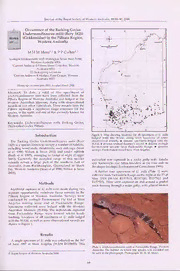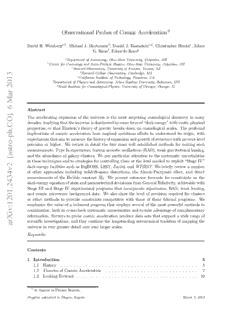
Observational Probes of Cosmic Acceleration PDF
Preview Observational Probes of Cosmic Acceleration
Observational Probes of Cosmic Acceleration✩ David H. Weinberga,b, Michael J. Mortonsonb, Daniel J. Eisensteinc,d, Christopher Hiratae, Adam G. Riessf, Eduardo Rozog aDepartment of Astronomy, Ohio State University, Columbus, OH bCenter for Cosmology and Astro-Particle Physics, Ohio State University, Columbus, OH cSteward Observatory, University of Arizona, Tucson, AZ 3 dHarvard College Observatory, Cambridge, MA 1 eCalifornia Institute of Technology, Pasadena, CA 0 fDepartment of Physics and Astronomy, Johns Hopkins University, Baltimore, MD 2 gKavli Institute for Cosmological Physics, University of Chicago, Chicago, IL r a M 6 Abstract ] O The accelerating expansion of the universe is the most surprising cosmological discovery in many C decades,implyingthattheuniverseisdominatedbysomeformof“darkenergy”withexoticphysical . properties, or that Einstein’s theory of gravity breaks down on cosmological scales. The profound h implications of cosmic acceleration have inspired ambitious efforts to understand its origin, with p - experimentsthataimtomeasurethehistoryofexpansionandgrowthofstructurewithpercent-level o precision or higher. We review in detail the four most well established methods for making such r t s measurements: TypeIasupernovae,baryonacousticoscillations (BAO),weakgravitational lensing, a and the abundance of galaxy clusters. We pay particular attention to the systematic uncertainties [ in these techniques and to strategies for controlling them at the level needed to exploit “Stage IV” 2 dark energy facilities such as BigBOSS, LSST, Euclid, and WFIRST. We briefly review a number v 4 of other approaches including redshift-space distortions, the Alcock-Paczynski effect, and direct 3 measurements of the Hubble constant H . We present extensive forecasts for constraints on the 0 4 darkenergyequationofstateandparameterizeddeviationsfromGeneralRelativity, achievablewith 2 . Stage III and Stage IV experimental programs that incorporate supernovae, BAO, weak lensing, 1 0 and cosmic microwave background data. We also show the level of precision required for clusters 2 or other methods to provide constraints competitive with those of these fiducial programs. We 1 emphasize the value of a balanced program that employs several of the most powerful methods in : v combination, both to cross-check systematic uncertainties and to take advantage of complementary i X information. Surveys to probe cosmic acceleration produce data sets that support a wide range of r scientific investigations, and they continue the longstanding astronomical tradition of mapping the a universe in ever greater detail over ever larger scales. Keywords: Contents 1 Introduction 5 1.1 History . . . . . . . . . . . . . . . . . . . . . . . . . . . . . . . . . . . . . . . . . . . 5 1.2 Theories of Cosmic Acceleration . . . . . . . . . . . . . . . . . . . . . . . . . . . . . 7 1.3 Looking Forward . . . . . . . . . . . . . . . . . . . . . . . . . . . . . . . . . . . . . . 10 ✩ To Appear in Physics Reports. Preprint submitted to Physics Reports March 7, 2013 2 Observables, Parameterizations, and Methods 15 2.1 Basic Equations . . . . . . . . . . . . . . . . . . . . . . . . . . . . . . . . . . . . . . . 15 2.2 Model Parameterizations . . . . . . . . . . . . . . . . . . . . . . . . . . . . . . . . . . 17 2.3 CMB Anisotropies and Large Scale Structure . . . . . . . . . . . . . . . . . . . . . . 20 2.4 Parameter Dependences and CMB Constraints . . . . . . . . . . . . . . . . . . . . . 24 2.5 Overview of Methods . . . . . . . . . . . . . . . . . . . . . . . . . . . . . . . . . . . . 32 3 Type Ia Supernovae 34 3.1 General Principles . . . . . . . . . . . . . . . . . . . . . . . . . . . . . . . . . . . . . 34 3.2 The Current State of Play . . . . . . . . . . . . . . . . . . . . . . . . . . . . . . . . . 35 3.3 Observational Considerations . . . . . . . . . . . . . . . . . . . . . . . . . . . . . . . 38 3.4 Systematic Uncertainties and Strategies for Amelioration . . . . . . . . . . . . . . . 40 3.5 Space vs. Ground . . . . . . . . . . . . . . . . . . . . . . . . . . . . . . . . . . . . . . 42 3.6 Prospects . . . . . . . . . . . . . . . . . . . . . . . . . . . . . . . . . . . . . . . . . . 43 4 Baryon Acoustic Oscillations 45 4.1 General Principles . . . . . . . . . . . . . . . . . . . . . . . . . . . . . . . . . . . . . 45 4.2 The Current State of Play . . . . . . . . . . . . . . . . . . . . . . . . . . . . . . . . . 45 4.3 Theory of BAO . . . . . . . . . . . . . . . . . . . . . . . . . . . . . . . . . . . . . . . 50 4.3.1 Linear Theory . . . . . . . . . . . . . . . . . . . . . . . . . . . . . . . . . . . 50 4.3.2 Non-linear Evolution and Galaxy Clustering Bias . . . . . . . . . . . . . . . . 52 4.3.3 Reconstruction . . . . . . . . . . . . . . . . . . . . . . . . . . . . . . . . . . . 55 4.3.4 Fitting to Data . . . . . . . . . . . . . . . . . . . . . . . . . . . . . . . . . . . 57 4.4 Observational Considerations . . . . . . . . . . . . . . . . . . . . . . . . . . . . . . . 59 4.4.1 Statistical Errors . . . . . . . . . . . . . . . . . . . . . . . . . . . . . . . . . . 59 4.4.2 From BAO to Dark Energy . . . . . . . . . . . . . . . . . . . . . . . . . . . . 60 4.4.3 Sampling Density . . . . . . . . . . . . . . . . . . . . . . . . . . . . . . . . . . 63 4.4.4 Spectroscopic vs. Photometric Redshifts . . . . . . . . . . . . . . . . . . . . . 63 4.4.5 Tracers of Structure . . . . . . . . . . . . . . . . . . . . . . . . . . . . . . . . 64 4.5 Systematic Uncertainties and Strategies for Amelioration . . . . . . . . . . . . . . . 66 4.5.1 Measurement Systematics . . . . . . . . . . . . . . . . . . . . . . . . . . . . . 66 4.5.2 Astrophysical Systematics . . . . . . . . . . . . . . . . . . . . . . . . . . . . . 68 4.5.3 Cosmological Systematics . . . . . . . . . . . . . . . . . . . . . . . . . . . . . 69 4.6 Space vs. Ground . . . . . . . . . . . . . . . . . . . . . . . . . . . . . . . . . . . . . . 69 4.7 Prospects . . . . . . . . . . . . . . . . . . . . . . . . . . . . . . . . . . . . . . . . . . 70 5 Weak Lensing 73 5.1 General principles: Overview . . . . . . . . . . . . . . . . . . . . . . . . . . . . . . . 73 5.2 Weak lensing principles: Mathematical discussion . . . . . . . . . . . . . . . . . . . . 75 5.2.1 Deflection of light in cosmology . . . . . . . . . . . . . . . . . . . . . . . . . . 75 5.2.2 Cosmic shear, magnification, and flexion . . . . . . . . . . . . . . . . . . . . . 76 5.2.3 Power spectra and correlation functions* . . . . . . . . . . . . . . . . . . . . 78 5.2.4 Method I: Cosmic Shear Power Spectrum* . . . . . . . . . . . . . . . . . . . 81 5.2.5 Method II: Power Spectrum Tomography* . . . . . . . . . . . . . . . . . . . . 81 5.2.6 Method III: Galaxy-galaxy Lensing* . . . . . . . . . . . . . . . . . . . . . . . 82 5.2.7 Method IV: Cosmography* . . . . . . . . . . . . . . . . . . . . . . . . . . . . 85 5.2.8 Method V: Non-Gaussian Statistics* . . . . . . . . . . . . . . . . . . . . . . . 86 5.3 The Current State of Play . . . . . . . . . . . . . . . . . . . . . . . . . . . . . . . . . 87 2 5.3.1 Cosmic shear . . . . . . . . . . . . . . . . . . . . . . . . . . . . . . . . . . . . 87 5.3.2 Galaxy-galaxy lensing as a cosmological probe . . . . . . . . . . . . . . . . . 90 5.3.3 Lensing outside the optical bands . . . . . . . . . . . . . . . . . . . . . . . . . 91 5.4 Observational Considerations and Survey Design . . . . . . . . . . . . . . . . . . . . 92 5.4.1 Statistical Errors . . . . . . . . . . . . . . . . . . . . . . . . . . . . . . . . . . 92 5.4.2 The Galaxy Population for Optical Surveys . . . . . . . . . . . . . . . . . . . 95 5.4.3 Photometric Redshifts and their Calibration . . . . . . . . . . . . . . . . . . . 95 5.4.4 Lensing in the Radio . . . . . . . . . . . . . . . . . . . . . . . . . . . . . . . . 98 5.4.5 Lensing of the CMB . . . . . . . . . . . . . . . . . . . . . . . . . . . . . . . . 99 5.5 Measuring Shears . . . . . . . . . . . . . . . . . . . . . . . . . . . . . . . . . . . . . . 100 5.5.1 The Idealized Problem . . . . . . . . . . . . . . . . . . . . . . . . . . . . . . . 101 5.5.2 Shape Measurement Algorithms* . . . . . . . . . . . . . . . . . . . . . . . . . 103 5.5.3 Shape Measurement Errors* . . . . . . . . . . . . . . . . . . . . . . . . . . . . 106 5.5.4 Noise Rectification and Selection Biases* . . . . . . . . . . . . . . . . . . . . 107 5.5.5 Determining the PSF and Instrument Properties . . . . . . . . . . . . . . . . 108 5.6 Astrophysical systematics . . . . . . . . . . . . . . . . . . . . . . . . . . . . . . . . . 110 5.6.1 Intrinsic Alignments* . . . . . . . . . . . . . . . . . . . . . . . . . . . . . . . 110 5.6.2 Theoretical uncertainties in the matter power spectrum* . . . . . . . . . . . . 115 5.7 Systematic Errors and their Amelioration: Summary . . . . . . . . . . . . . . . . . . 116 5.8 Advantages of a Space Mission . . . . . . . . . . . . . . . . . . . . . . . . . . . . . . 117 5.9 Prospects . . . . . . . . . . . . . . . . . . . . . . . . . . . . . . . . . . . . . . . . . . 118 6 Clusters of Galaxies 123 6.1 General Principles . . . . . . . . . . . . . . . . . . . . . . . . . . . . . . . . . . . . . 123 6.2 The Current State of Play . . . . . . . . . . . . . . . . . . . . . . . . . . . . . . . . . 126 6.3 Observational Considerations . . . . . . . . . . . . . . . . . . . . . . . . . . . . . . . 130 6.3.1 Expected Numbers and Cosmological Sensitivity . . . . . . . . . . . . . . . . 130 6.3.2 Cluster Finding . . . . . . . . . . . . . . . . . . . . . . . . . . . . . . . . . . . 135 6.3.3 Calibrating the Observable–Mass Relation . . . . . . . . . . . . . . . . . . . . 138 6.4 Systematic Uncertainties and Strategies for Amelioration . . . . . . . . . . . . . . . 143 6.4.1 Redshift Uncertainties . . . . . . . . . . . . . . . . . . . . . . . . . . . . . . . 143 6.4.2 Contamination and Incompleteness: The Tails of P(X M,z) . . . . . . . . . 144 | 6.4.3 Calibrating the Core of P(X M,z) . . . . . . . . . . . . . . . . . . . . . . . . 145 | 6.4.4 Theoretical Systematics . . . . . . . . . . . . . . . . . . . . . . . . . . . . . . 149 6.5 Space vs. Ground . . . . . . . . . . . . . . . . . . . . . . . . . . . . . . . . . . . . . . 150 6.6 Prospects . . . . . . . . . . . . . . . . . . . . . . . . . . . . . . . . . . . . . . . . . . 151 7 Alternative Methods 154 7.1 Measurement of the Hubble Constant at z 0 . . . . . . . . . . . . . . . . . . . . . 154 ≈ 7.2 Redshift-Space Distortions . . . . . . . . . . . . . . . . . . . . . . . . . . . . . . . . . 156 7.3 The Alcock-Paczynski Test . . . . . . . . . . . . . . . . . . . . . . . . . . . . . . . . 161 7.4 Alternative Distance Indicators . . . . . . . . . . . . . . . . . . . . . . . . . . . . . . 164 7.5 Standard Sirens . . . . . . . . . . . . . . . . . . . . . . . . . . . . . . . . . . . . . . . 165 7.6 The Lyα Forest as a Probe of Structure Growth . . . . . . . . . . . . . . . . . . . . 166 7.7 Other Tests of Modified Gravity . . . . . . . . . . . . . . . . . . . . . . . . . . . . . 168 7.8 The Integrated Sachs-Wolfe Effect . . . . . . . . . . . . . . . . . . . . . . . . . . . . 170 7.9 Cross-Correlation of Weak Lensing and Spectroscopic Surveys . . . . . . . . . . . . . 171 7.10 Strong Gravitational Lenses . . . . . . . . . . . . . . . . . . . . . . . . . . . . . . . . 172 3 7.11 Galaxy Ages . . . . . . . . . . . . . . . . . . . . . . . . . . . . . . . . . . . . . . . . 173 7.12 Redshift Drift . . . . . . . . . . . . . . . . . . . . . . . . . . . . . . . . . . . . . . . . 174 7.13 Alternative Methods: Summary . . . . . . . . . . . . . . . . . . . . . . . . . . . . . . 174 8 A Balanced Program on Cosmic Acceleration 176 8.1 A Fiducial Program . . . . . . . . . . . . . . . . . . . . . . . . . . . . . . . . . . . . 177 8.2 Forecasting Constraints . . . . . . . . . . . . . . . . . . . . . . . . . . . . . . . . . . 179 8.3 Results: Forecasts for the Fiducial Program and Variations . . . . . . . . . . . . . . 189 8.3.1 Constraints in simple w(z) models . . . . . . . . . . . . . . . . . . . . . . . . 189 8.3.2 Constraints on structure growth parameters . . . . . . . . . . . . . . . . . . . 192 8.3.3 Dependence on w(z) model and binning of data . . . . . . . . . . . . . . . . . 196 8.3.4 Constraints on w(z) in the general model . . . . . . . . . . . . . . . . . . . . 198 8.4 Forecasts for Clusters . . . . . . . . . . . . . . . . . . . . . . . . . . . . . . . . . . . 206 8.5 Forecasts for Alternative Methods . . . . . . . . . . . . . . . . . . . . . . . . . . . . 210 8.5.1 The Hubble constant . . . . . . . . . . . . . . . . . . . . . . . . . . . . . . . . 211 8.5.2 The Alcock-Paczynski Test . . . . . . . . . . . . . . . . . . . . . . . . . . . . 212 8.5.3 Redshift-space Distortions . . . . . . . . . . . . . . . . . . . . . . . . . . . . . 213 8.5.4 Distances . . . . . . . . . . . . . . . . . . . . . . . . . . . . . . . . . . . . . . 214 8.6 Observables and Aggregate Precision . . . . . . . . . . . . . . . . . . . . . . . . . . . 215 8.7 Prospects with Many Probes . . . . . . . . . . . . . . . . . . . . . . . . . . . . . . . 221 9 Conclusions 224 Appendix A Glossary of Acronyms and Facilities 231 4 1. Introduction Gravity pulls. Newton’s Principiageneralized thislongstandingfact ofhumanexperienceinto a universalattractive force,providingcompellingexplanationsofanextraordinaryrangeofterrestrial and celestial phenomena. Newtonian attraction weakens with distance, but it never vanishes, and it never changes sign. Einstein’s theory of General Relativity (GR) reproduces Newtonian gravity in the limit of weak spacetime curvature and low velocities. For a homogeneous universe filled with matterorradiation,GRpredictsthatthecosmicexpansionwillslowdownovertime, inaccordwith Newtonian intuition. In the late 1990s, however, two independent studies of distant supernovae foundthat theexpansion of the universehas accelerated over thelast five billion years (Riess et al., 1998; Perlmutter et al., 1999), a remarkable discovery that is now buttressed by multiple lines of independent evidence. On the scale of the cosmos, gravity repels. Cosmic acceleration is the most profoundpuzzle in contemporary physics. Even the least exotic explanations demand the existence of a pervasive new component of the universe with unusual physical properties that lead to repulsive gravity. Alternatively, acceleration could be a sign that GRitselfbreaksdownoncosmological scales. Cosmicacceleration maybethecrucialempiricalclue that leads to understanding the interaction between gravity and the quantum vacuum, or reveals the existence of extra spatial dimensions, or sheds light on the nature of quantum gravity itself. Because of these profound implications, cosmic acceleration has inspired a wide range of am- bitious experimental efforts, which aim to measure the expansion history and growth of structure in the cosmos with percent-level precision or better. In this article, we review the observational methods that underlie these efforts, with particular attention to techniques that are likely to see major advances over the next decade. We will emphasize the value of a balanced program that pursues several of these methods in combination, both to cross-check systematic uncertainties and to take advantage of complementary information. The remainder of this introduction briefly recaps the history of cosmic acceleration and current theories for its origin, then sets this article in the context of future experimental efforts and other reviews of the field. Section 2 describes the basic observables that can be used to probe cosmic acceleration, relates them to the underlying equations that govern the expansion history and the growth of structure, and introduces some of the parameters commonly used to define “generic” cosmic acceleration models. It concludes with an overview of the leading methods for measuring these observables. In 3–6 we go through the four most well developed methods in detail: Type Ia §§ supernovae,baryonacousticoscillations (BAO),weakgravitational lensing,andclustersofgalaxies. Section 7 summarizes several other potential probes, whose prospects are currently more difficult to assess but in some cases appear quite promising. Informed by the discussions in these sections, 8 presents our principal new results: forecasts of the constraints on cosmic acceleration models § that could be achieved by combining results from these methods, based on ambitious but feasible experiments like the ones endorsed by the Astro2010 Decadal Survey report, New Worlds, New Horizons in Astronomy and Astrophysics. We summarize the implications of our analyses in 9 . § 1.1. History Just two years after the completion of General Relativity, Einstein (1917) introduced the first modern cosmological model. With little observational guidance, Einstein assumed (correctly) that the universe is homogeneous on large scales, and he proposed a matter-filled space with finite, positively curved, 3-sphere geometry. He also assumed (incorrectly) that the universe is static. Finding these two assumptions to be incompatible, Einstein modified the GR field equation to include the infamous “cosmological term,” now usually known as the “cosmological constant” and denotedΛ. Ineffect,headdedanewcomponentwhoserepulsivegravitycouldbalancetheattractive 5 gravity of the matter (though he did not describe his modification in these terms). In the 1920s, Friedmann (1922, 1924) and Lemaˆıtre (1927) introduced GR-based cosmological models with an expanding or contracting universe, some of them including a cosmological constant, others not. In 1929, Hubble discovered direct evidence for the expansion of the universe (Hubble, 1929), thus removing the original motivation for the Λ term.1 In 1965, the discovery and interpretation of the cosmic microwave background (CMB; Penzias and Wilson 1965; Dicke et al. 1965) provided the pivotal evidence for a hot big bang origin of the cosmos. From the 1930s through the 1980s, a cosmological constant seemed unnecessary to explaining cosmological observations. The “cosmological constant problem” as it was defined in the 1980s was a theoretical one: why was the gravitational impact of the quantum vacuum vanishingly small compared to the “naturally” expected value (see 1.2)? In the late 1980s and early 1990s, however, § a variety of indirect evidence began to accumulate in favor of a cosmological constant. Studies of large scale galaxy clustering, interpreted in the framework of cold dark matter (CDM) models with inflationary initial conditions, implied a low matter density parameter Ω = ρ /ρ 0.15 0.4 m m crit ≈ − (e.g., Maddox et al. 1990; Efstathiou et al. 1990), in agreement with direct dynamical estimates that assumed galaxies to be fair tracers of the mass distribution. Reconciling this result with the standard inflationary cosmology prediction of a spatially flat universe (Guth, 1981) required a new energy component with density parameter 1 Ω . Open-universe inflation models were m − also considered, but explaining the observed homogeneity of the CMB (Smoot et al., 1992) in such models required speculative appeals to quantum gravity effects (e.g., Bucher et al. 1995) rather than the semi-classical explanation of traditional inflation. By the mid-1990s, many cosmological simulation studies included both open-CDM models and Λ-CDM models, along with Ω = 1 models incorporating tilted inflationary spectra, non- m standard radiation components, or massive neutrino components (e.g., Ostriker and Cen 1996; Cole et al. 1997; Gross et al. 1998; Jenkins et al. 1998). Once normalized to the observed level of CMB anisotropies, the large-scale structure predictions of open and flat-Λ models differed at the tens-of-percent level, with flat models generally yielding a more natural fit to the observa- tions (e.g., Cole et al. 1997). Conflict between high values of the Hubble constant and the ages of globular clusters also favored a cosmological constant (e.g., Pierce et al. 1994; Freedman et al. 1994; Chaboyer et al. 1996), though the frequency of gravitational lenses pointed in the opposite direction (Kochanek, 1996). Thus, the combination of CMB data, large-scale structure data, age of the universe, and inflationary theory led many cosmologists to consider models with a cos- mological constant, and some to declare it as the preferred solution (e.g., Efstathiou et al. 1990; Krauss and Turner 1995; Ostriker and Steinhardt 1995). Enter the supernovae. In the mid-1990s, two teams set out to measure the cosmic deceleration rate, andthereby determinethematter density parameter Ω , bydiscovering andmonitoringhigh- m redshift, Type Ia supernovae. The recognition that the peak luminosity of supernovae was tightly correlated with the shape of the light curve (Phillips, 1993; Riess et al., 1996) played a critical role in this strategy, reducing the intrinsic distance error per supernova to 10%. While the first ∼ analysis of a small sample indicated deceleration (Perlmutter et al., 1997), by 1998 the two teams had converged on a remarkable result: when compared to local Type Ia supernovae (Hamuy et al., 1996), the supernovae at z 0.5 were fainter than expected in a matter-dominated universe with ≈ Ω 0.2 by about 0.2 mag, or 20% (Riess et al., 1998; Perlmutter et al., 1999). Even an empty, m ≈ freely expanding universe was inconsistent with the observations. Both teams interpreted their 1SeveralrecentpapershaveaddressedthecontributionsofLemaˆıtre,Friedmann,andSliphertothisdiscovery;the story is interestingly tangled (see, e.g., Block 2011; vanden Bergh 2011; Livio 2011; Belenkiy 2012; Peacock 2013). 6 measurements as evidence for an accelerating universe with a cosmological constant, consistent with a flat universe (Ω = 1) having Ω 0.7. tot Λ ≈ Why was the supernova evidence for cosmic acceleration accepted so quickly by the community at large? First, the internal checks carried out by the two teams, and the agreement of their con- clusions despite independentobservations and many differences of methodology, seemed to rule out many forms of observational systematics, even relatively subtle effects of photometric calibration or selection bias. Second, the ground had been well prepared by the CMB and large scale struc- ture data, which already provided substantial indirect evidence for a cosmological constant. This confluence of arguments favored the cosmological interpretation of the results over astrophysical explanations such as evolution of the supernova population or grey dust extinction that increased towards higher redshifts. Third, the supernova results were followed within a year by the results of balloon-borne CMB experiments that mapped the first acoustic peak and measured its angular lo- cation, providing strong evidence for spatial flatness (de Bernardis et al. 2000; Hanany et al. 2000; seeNetterfield et al.1997forearlierground-basedmeasurementshintingatthesameresult). Onits own,theacousticpeakonlyimpliedΩ 1,notanon-zeroΩ ,butitdovetailed perfectlywiththe tot Λ ≈ estimates of Ω and Ω from large scale structureand supernovae. Furthermore, the acoustic peak m Λ measurementimpliedthatthealternativetoΛwasnotanopenuniversebutastronglydecelerating, Ω = 1 universe that disagreed with the supernova data by 0.5 magnitudes, a level much harder to m explain with observational or astrophysical effects. Finally, the combination of spatial flatness and improving measurements of the Hubble constant (e.g., H = 71 6 km s−1 Mpc−1; Mould et al. 0 ± 2000) provided an entirely independent argument for an energetically dominant accelerating com- ponent: a matter-dominated universe with Ω = 1 would have age t = (2/3)H−1 9.5 Gyr, too tot 0 0 ≈ young to accommodate the 12-14 Gyr ages estimated for globular clusters (e.g., Chaboyer 1998). Adecadelater, thewebof observational evidenceforcosmic acceleration is intricate androbust. A wide range of observations — including larger and better calibrated supernova samples over a broader redshift span, high-precision CMB data down to small angular scales, the baryon acoustic scale in galaxy clustering, weak lensing measurements of dark matter clustering, the abundance of massive clusters in X-ray and optical surveys, the level of structure in the Lyα forest, and pre- cise measurements of H — are all consistent with an inflationary cold dark matter model with a 0 cosmological constant, commonly abbreviated as ΛCDM.2 Explaining all of these data simultane- ously requires an accelerating universe. Completely eliminating any one class of constraints (e.g., supernovae, or CMB, or H ) would not change this conclusion, nor would doubling the estimated 0 systematic errors on all of them. The question is no longer whether the universe is accelerating, but why. 1.2. Theories of Cosmic Acceleration A cosmological constant is the mathematically simplest solution to the cosmic acceleration puzzle. While Einstein introduced his cosmological term as a modification to the curvature side of the field equation, it is now more common to interpret Λ as a new energy component, constant in space and time. For an ideal fluid with energy density u and pressure p, the effective gravitational source term in GR is (u + 3p)/c2, reducing to the usual mass density ρ = u/c2 if the fluid is non-relativistic. For a component whose energy density remains constant as the universe expands, the first law of thermodynamics implies that when a comoving volume element in the universe expands by a (physical) amount dV, the corresponding change in energy is related to the pressure 2Many of therelevant observational references will appear in subsequent sections on specific topics. 7 via pdV = dU = udV. Thus,p = u,makingthegravitational sourceterm(u+3p)/c2 = 2u/c2. − − − A form of energy that is constant in space and time must have a repulsive gravitational effect. According to quantum field theory, “empty” space is filled with a sea of virtual particles. It would be reasonable to interpret the cosmological constant as the gravitational signature of this quantum vacuum energy, much as the Lamb shift is a signature of its electromagnetic effects.3 The problem is one of magnitude. Since virtual particles of any allowable mass can come into existence for short periods of time, the “natural” value for the quantum vacuum density is one Planck Mass per cubic Planck Length. This density is about 120 orders of magnitude larger than the cosmological constant suggested by observations: it would drive accelerated expansion with a timescale of t 10−43sec instead of t 1018sec. Since the only “natural” number close Planck Hubble ≈ ≈ to 10−120 is zero, itwas generally assumed (priorto 1990) that acorrect calculation of thequantum vacuum energy would eventually show it to be zero, or at least suppressed by an extremely large exponential factor (see review by Weinberg 1989). But the discovery of cosmic acceleration raises the possibility that the quantum vacuum really does act as a cosmological constant, and that its energy scale is 10−3eV rather than 1028eV for reasons that we do not yet understand. To date, there are no compelling theoretical arguments that explain either why the fundamental quantum vacuum energy might have this magnitude or why it might be zero. Theotherbasicpuzzleconcerningacosmological constantis: Whynow? Theratioofaconstant vacuum energy density to the matter density scales as a3(t), so it has changed by a factor of 1027 ∼ since big bang nucleosynthesis and by a factor 1042 since the electroweak symmetry breaking ∼ epoch, which seems (based on our current understanding of physics) like the last opportunity for a major rebalancing of matter and energy components. It therefore seems remarkably coincidental for the vacuum energy density and the matter energy density to have the same order of magnitude today. In the late 1970s, Robert Dicke used a similar line of reasoning to argue for a spatially flat universe (see Dicke and Peebles 1979), an argument that provided much of the initial motivation for inflationary theory (Guth, 1981). However, while the universe appears to be impressively close to spatial flatness, the existence of two energy components with different a(t) scalings means that Dicke’s “coincidence problem” is still with us. One possible solution to the coincidence problem is anthropic: if the vacuum energy assumes widely different values in different regions of the universe, then conscious observers will find them- selvesinregionsoftheuniversewherethevacuumenergyislowenoughtoallowstructureformation (Efstathiou, 1995; Martel et al., 1998). This type of explanation finds a natural home in “multi- verse” models of eternal inflation, where different histories of spontaneous symmetry breaking lead to different values of physical constants in each non-inflating “bubble” (Linde, 1987), and it has gained new prominence in the context of string theory, which predicts a “landscape” of vacua arising from different compactifications of spatial dimensions (Susskind, 2003). One can attempt to derive an expectation value of the observed cosmological constant from such arguments (e.g., Martel et al. 1998), but the results are sensitive to the choice of parameters that are allowed to vary (Tegmark and Rees, 1998) and to the choice of measure on parameter space, so it is hard to take such “predictions” beyond a qualitative level. A variant on these ideas is that the effective value (and perhaps even the sign) of the cosmological constant varies in time, and that structure will form and observers arise during periods when its magnitude is anomalously low compared to its natural (presumably Planck-level) energy scale (Brandenberger, 2002; Griest, 2002). 3Thisinterpretationofthecosmologicalconstantinthecontextofquantumfieldtheory,originallyduetoWolfgang Pauli,wasrevivedinthelate1960sbyZel’dovich(1968). Forfurtherdiscussion ofthehistoryseePeebles and Ratra (2003). For a detailed discussion in thecontext of contemporary particle theory,see thereview by Martin (2012). 8 A straightforward alternative to a cosmological constant is a field with negative pressure (and thus repulsive gravitational effect) whose energy density changes with time (Ratra and Peebles, 1988; Frieman et al., 1995; Ferreira and Joyce, 1997). In particular, a canonical scalar field φ with potential V(φ) has energy density and pressure u = 1 1 φ˙2+V(φ), φ 2~c3 p = 1 1 φ˙2 V(φ), (1) φ 2~c3 − so if the kinetic term is subdominant, then p u . A slowly rolling scalar field of this sort is φ φ ≈ − analogous to the inflaton field hypothesized to drive inflation, but at an energy scale many, many orders of magnitude lower. In general, a scalar field has an equation-of-state parameter p w (2) ≡ u that is greater than 1 and varies in time, while a true cosmological constant has w = 1 at all − − times. Some forms of V(φ) allow attractor or “tracker” solutions in which the late-time evolution of φ is insensitive to the initial conditions (Ratra and Peebles, 1988; Steinhardt et al., 1999), and a subset of these allow u to track the matter energy density at early times, ameliorating the φ coincidence problem (Skordis and Albrecht, 2002). Some choices give a nearly constant w that is different from 1, while others have w 1 as an asymptotic state at either early or late times, − ≈ − referred to respectively as “thawing” or “freezing” solutions (Caldwell and Linder, 2005). Scalar field models in which the energy density is dominated by V(φ) are popularly known as “quintessence” (Zlatev et al., 1999). A number of variations have been proposed in which the energy density of the field is dominated by kinetic, spin, or oscillatory degrees of freedom (e.g., Armendariz-Picon et al. 2001; Boyle et al. 2002). Other models introduce non-canonical kinetic terms or couple the field to dark matter. Models differ in the evolution of u (a) and w(a), and φ some have other distinctive features such as large scale energy density fluctuations that can affect CMB anisotropies. Of course, none of these models addresses the original “cosmological constant problem” of why the true vacuum energy is unobservably small. The alternative to introducing a new energy component is to modify General Relativity itself on cosmological scales, for example by replacing the Ricci scalar R in the gravitational action with some higher order function f(R) (e.g., Capozziello and Fang 2002; Carroll et al. 2004), or by allowing gravity to “leak” into an extra dimension in a way that reduces its attractive effect at large scales (Dvali et al., 2000). GR modifications can alter the relation between the expansion history and the growth of matter clustering, and, as discussed in subsequent sections, searching for mismatches between observational probes of expansion and observational probes of structure growth is one generic approach to seeking signatures of modified gravity. To be consistent with tight constraints from solar system tests, modifications of gravity must generally be “shielded” on small scales, by mechanisms such as the “chameleon” effect, the “symmetron” mechanism, or “Vainshtein screening” (see the review by Jain and Khoury 2010). These mechanisms can have the effect of introducingintermediate scale forces. GR modifications can also alter therelation between non-relativistic matter clustering and gravitational lensing, which in standard GR is controlled by two different potentials that are equal to each other for fluids without anisotropic stress. The distinction between a new energy component and a modification of gravity may be am- biguous. The most obvious ambiguous case is the cosmological constant itself, which can be placed on either the “curvature” side or the “stress-energy” side of the Einstein field equation. More generally, many theories with f(R) modifications of the gravitational action can be written in a mathematically equivalent form of GR plus a scalar field with specified properties (Chiba, 2003; 9 Kunz and Sapone, 2007). Relative to expectations for a cosmological constant or a simple scalar field model, models in which dark matter decays into dark energy can produce a mismatch be- tween the histories of expansion and structure growth while maintaining GR (e.g., Jain and Zhang 2008; Wei and Zhang 2008). Thus, even perfect measurements of all relevant observables may not uniquely locate the explanation of cosmic acceleration in the gravitational or stress-energy sector. There is a minority opinion (see Buchert 2011 for a recent review article) that the phenomena interpreted as evidence for dark energy could instead arise from the backreaction of small scale inhomogeneities on the large scale cosmic expansion. This line of argument contends that the expansion rate of a universe with small scale inhomogeneity can differ significantly from that of a homogeneous universe with the same average density. In our view, the papers on this theme present an incorrect interpretation of correct underlying equations, and we do not see these “inho- mogeneous averaging” effects as a viable alternative to dark energy. Baumann et al. (2012) present a detailed counter-argument, treating inhomogeneous matter as a fluid with an effective viscosity and pressure and demonstrating that the backreaction on the evolution of background expansion and large scale perturbations is extremely small. (See Green and Wald 2011 for an alternative form of this counter-argument and Peebles 2010 for a less formal but still persuasive version.) In a somewhat related vein, the suggestion that acceleration could arise from superhorizon fluctua- tions generated by inflation (Barausse et al., 2005; Kolb et al., 2005) is ruled out by a complete perturbation analysis (Hirata and Seljak, 2005). While the term “dark energy” seems to presuppose a stress-energy explanation, in practice it has become a generic term for referring to the cosmic acceleration phenomenon. In particular, the phrase “dark energy experiments” has come to mean observational studies aimed at measuring acceleration and uncovering its cause, regardless of whether that cause is a new energy field or a modification of gravity. We willgenerally adoptthis common usageof “darkenergy” inthisreview, thoughwherethedistinctionmatterswewilltrytouse“cosmicacceleration” asourgenericterm. It is important to keep in mind that we presently have strong observational evidence for accelerated cosmic expansion but no compelling evidence that the cause of this acceleration is really a new energy component. The magnitude and coincidence problems are challenges for any explanation of cosmic accel- eration, whether a cosmological constant, a scalar field, or a modification of GR. The coincidence problem seems like an important clue for identifying a correct solution, and some models at least reduce its severity by coupling the matter and dark energy densities in some way. Multiverse models with anthropic selection arguably offer a solution to the coincidence problem, because if the probability distributionof vacuumenergy densities rises swiftly towards high values, then structure may generically form at a time when the matter and vacuum energy density values are similar, in that small subset of universes where structure forms at all. But sometimes a coincidence is just a coincidence. Essentially all current theories of cosmic acceleration have one or more adjustable parameters whose value is tuned to give the observed level of acceleration, and none of them yield this level as a “natural” expectation unless they have built it in ahead of time. These theories are designed to explain acceleration itself rather than emerging from independent theoretical con- siderations or experimental constraints. Conversely, a theory that provided a compelling account of the observed magnitude of acceleration — like GR’s successful explanation of the precession of Mercury — would quickly jump to the top of the list of cosmic acceleration models. 1.3. Looking Forward The deep mystery and fundamental implications of cosmic acceleration have inspired numerous ambitiousobservationaleffortstomeasureitshistoryand,itishoped,revealitsorigin. Thereportof theDarkEnergyTaskForce(DETF;Albrecht et al.2006)playedacriticalroleinsystematizingthe 10
Description:The list of books you might like

The 48 Laws of Power

Mind Management, Not Time Management

The Strength In Our Scars

Better Than the Movies

When Death Becomes Life: Notes from a Transplant Surgeon
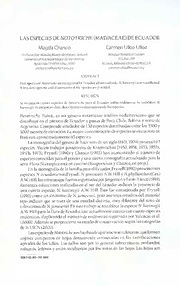
LAS ESPECIES DE NOTOTRICHE (MALVACEAE) DE ECUADOR
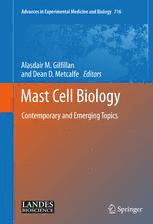
Mast Cell Biology: Contemporary and Emerging Topics

00. Il Trono di Ghiaccio - La Lama dell’Assassina
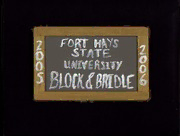
FHSU Block & Bridle Club Scrapbook: 2005-2006
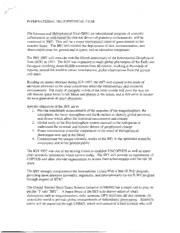
NASA Technical Reports Server (NTRS) 20050241962: International Heliophysical Year
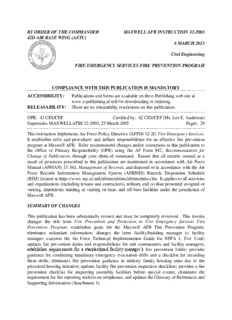
BY ORDER OF THE COMMANDER MAXWELL AFB INSTRUCTION 32-2003 42D AIR BASE WING ...

Cento Anni di Ricerca Petrolifera(1)

Live and let live

Structured glass-fiber catalysts

Vitis vinifera subsp. vinifera cv. Marselan
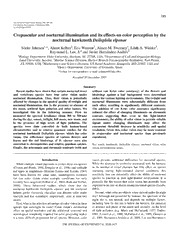
DTIC ADA519442: Crepuscular and Nocturnal Illumination and Its Effects on Color Perception by the Nocturnal Hawkmoth Deilephila elpenor

Die Tiefe

By Rev. AJ Gordon, DD

North Carolina Symphony Book: Teacher Handbook
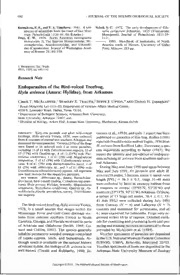
Research Note - Endoparasites of the Bird-voiced Treefrog, Hyla avivoca (Anura: Hylidae), from Arkansas
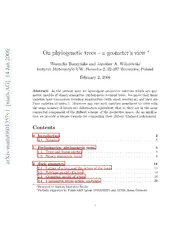
On phylogenetic trees - a geometer's view

Pass the PSA

